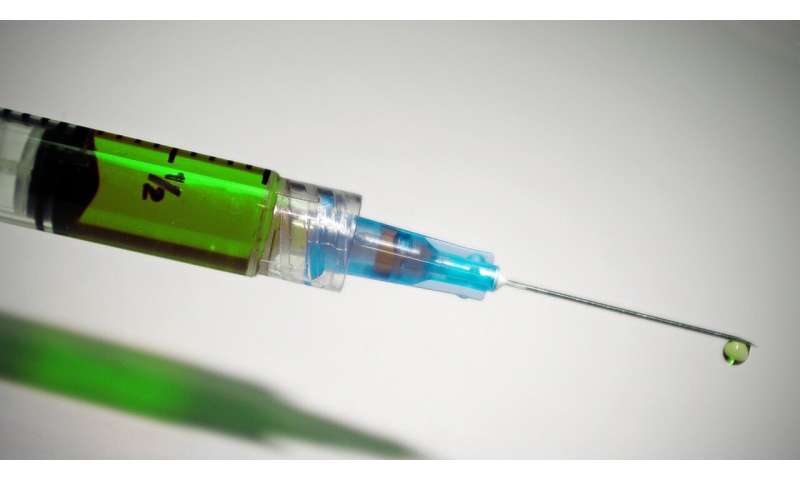
Cash-strapped Latin American governments face severe geographical, economic and social challenges in trying to ensure life-saving COVID-19 vaccines are made available to vulnerable populations, experts say.
Megacities like Sao Paulo, mountain ranges like the Andes as well as the vast Amazon basin pose just a few of the geographical problems for distributors, given the vital need to maintain the cold chain to preserve the vaccines.
Transporting vaccines “to the most distant parts of the big cities and to peripheral neighborhoods, with the need to conserve the cold chain, will be the first major challenge,” Colombian epidemiologist Carlos Trillos told AFP.
Governments also face a race against time to provide training to those handling the doses throughout the cold chain, he said.
Amazon basin countries had an early taste of the geographical challenges ahead for their vaccination campaigns, after health workers struggled to provide care for three million indigenous people scattered throughout the rainforest, an area almost seven times the size of Spain.
Vaccine campaigners also worry about rampant disinformation in the continent worst-affected by the coronavirus pandemic.
Some 12.5 million of the 630 million Latin Americans have been infected with the coronavirus and at least 435,000 have died, a third of the total number of deaths worldwide, according to AFP figures based on official data.
Challenging and costly’
The process will be “challenging and costly” said Jarbas Barbosa, deputy director of the Pan American Health Organization (PAHO).
The organization expects to distribute vaccines in the region between March and May 2021 through Covax, a World Health Organization initiative to guarantee equal access for impoverished countries.
All Latin American and Caribbean countries have joined Covax, although some lack funds to purchase vaccines themselves, Barbosa said.
In any case Covax will only provide enough vaccines for 10 to 20 percent of the population, forcing many governments to sign separate bilateral agreements with laboratories and biotechnology companies.
Countries in the region are having to spend significant amounts of money on these pre-purchases just as they are experiencing historic economic contractions from the impact of the pandemic.
Lower-income countries like Bolivia, Haiti, Guyana and several Caribbean island states are betting on the Covax-eligible status to receive vaccines without contributing funds. So is El Salvador, Honduras and Nicaragua, recently battered by Hurricanes Iota and Eta.
Covax’s latest projections estimate that vaccinating just 20 percent of the region’s population will cost more than $2 billion.
The vaccine will be free of charge, rolled out in a first phase for health professionals, essential workers and, in some cases, older people or those with conditions that put them at risk of developing a serious case of COVID-19.
Complex logistics
Storing and distributing the vaccines is emerging as the main obstacle.
Among the companies leading the vaccine race, Pfizer/BioNTech require their doses being stored at temperatures around -70 degrees Celsius—meaning they can only be distributed in large cities, experts said.
Maintaining the cold chain “is a challenge for all countries” said Barbosa.
One positive is that “there are more than 100 vaccines in development … the others that are closer to concluding clinical trials use the same cold chain that countries already use,” he said, in ranges of—15 to -25 Celsius and 2 to 8 degrees Celsius.
Argentina, which has signed agreements that so far guarantee vaccines for 28 of its 44 million inhabitants, will deploy the army to ensure doses are distributed.
Crisis and disinformation
Peru, the Latin American country with the most deaths per million inhabitants (1,081), has so far secured 9.5 million vaccines and is negotiating with laboratories to cover 24.5 million of its 31 million inhabitants.
Venezuela signed a deal with Russia to receive 10 million Sputnik V vaccines in the first quarter of 2021, and Caracas said mass vaccinations would begin in April.
However, according to Virgilio Vasquez, head of local NGO Doctors United, the problem in Venezuela goes far beyond doubts over the infrastructure and equipment to support the cold chain.
“Vaccines have to reach not only large hospitals but also outpatient clinics in remote areas,” he said.
Even if health centers were to receive the necessary equipment to ensure safe vaccine storage, health workers “will still have serious electrical problems, with regions where the power goes out for hours every day.”
Vasquez, a specialist in epidemiological data processing, also said Venezuela’s vaccination campaigners will lack fuel to power vehicles needed to distribute the vaccine because of a severe gasoline shortage.
Brazil’s vaccine campaign was well set “to reach the most remote areas,” said Natalia Pasternak, microbiology professor at the University of Sao Paulo.
Source: Read Full Article